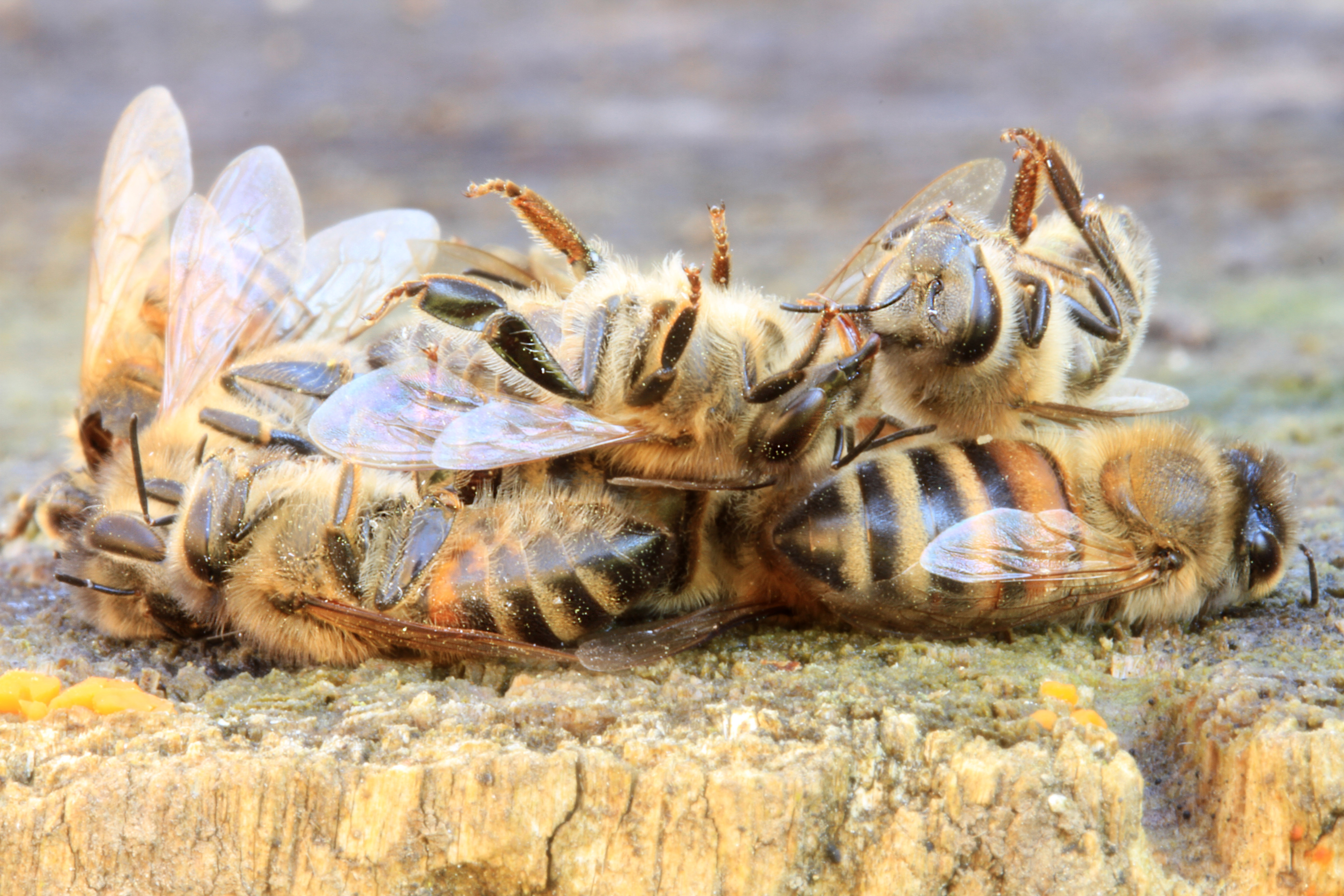Case study
Impacts of pathogens and chemicals in the environment on pollinators and pollination

The combined impacts of pathogens and insecticides have implications for the physiological health of individual honey bees and potentially up to the colony scale. Laboratory studies have shown increased larval or worker honey bee mortality and energetic stress due to the additive or synergistic interactions between sub-lethal doses of either neonicotinoid or phenylpyrazole insecticides and infection by the microsporidian fungus Nosema ceranae or black queen cell virus (BQCV). There is some evidence that the synergies between insecticide exposure and N. ceranae infection may be contingent on the actual insecticide dose to which the insect is exposed. Less studied are the impacts on pollinators of interactions between insect pathogens and either the miticides used to control invertebrate mites and pests (e.g., Varroa) of managed honey bee hives or the herbicides/fungicides applied to crop fields to control weeds and fungal pathogens. One recent study showed the presence of miticides (amitraz and fluvalinate) and fungicides (chlorothalonil and pyraclostrobin) in pollen consumed by honey bees led to a reduction in the individual bee’s capacity to resist N. ceranae infection. There is some evidence that pesticide exposure impairs the function of the insect immune system, which offers a potential mechanism for combined pesticidepathogen impacts on bee health.
To date all empirical studies of pathogen-chemical interactions have focused solely on a few eusocial bee species, mainly honey bees. Sociality through the colony hierarchy may to an extent protect reproductive individuals (queens) from exposure to such stressors, but see Fauser-Misslin et al., (2014) for an example of bumble bee queen mortality, whilst the impacts on thousands of solitary bee species worldwide remain unstudied.